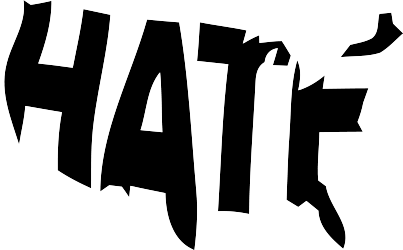Fascism in 2025 America: A Warning and Call to Action
Untitled. By Robert Frank, via blind magazine
The specter of fascism returns
“Remember who the real enemy is.” — The Hunger Games
Fiction has never struggled to name tyranny. We root for Katniss against the Capitol, for the Rebellion against the Galactic Empire, for Dumbledore’s Army against Voldemort’s regime. Ultranationalism and mythic populism are no longer just plot devices. In 2025 America, our drift toward authoritarianism is a political reality, and the courage we cheer in our favorite stories feels conspicuously absent on our own streets.
The word fascism is no longer a relic belonging to the past tense of history books; it is no longer something that happens “over there.” It has become a present and urgent threat. Across U.S. politics, civic institutions, and public discourse, we see signs of power consolidation, intensifying propaganda, and polarization so severe that it threatens the very possibility of a united nation. Confronting this moment requires clarity about how fascism manifests today, and honesty about how it mutates. It also requires action: cultivating habits of resistance, asking sharper questions, and taking daily steps, however small, to preserve democracy as a living practice.
Below, I will examine how propaganda, language, and structural violence serve as accelerants, propelling democratic erosion forward under the guise of common sense or national security. And finally, I will turn it back to us: what questions do we need to ask ourselves, and what everyday practices can we adopt to resist the drift and keep democracy alive?
What is fascism (and how does it mutate)?
To understand fascism in the modern era, we have to think beyond the simplistic paradigm of a resurrected 1930s Mussolini or Hitler, but rather consider a shifting set of tendencies: ultranationalism, mythic populism, the merger of corporate and state power, anti-pluralism, and the instrumentalization of violence or the threat thereof. Some useful definitions:
Political scientist Robert Paxton defines fascism as a form of political behavior marked by obsessive preoccupation with decline, humiliation, or victimhood; a call for a rebirth; and a cult of unity, leader, and purity.
Others emphasize fascism’s reliance on propaganda, cultic followings, scapegoating of internal “others,” and efforts to dismantle liberal checks and institutions.
In the U.S., fascist tendencies have long roots in white supremacy, nativism, and organized political violence (e.g., the KKK, early 20th-century proto-fascist groups).
What matters isn’t whether America is “fully fascist” (a binary judgment), but that we can observe a sliding scale of authoritarian drift. In 2025, some of the dynamics we must watch are:
Centralization of executive power: sweeping orders, redefining terms like “terrorism,” bypassing oversight.
Militarization of internal politics: Use of federal troops domestically (“full force, if necessary”) to quell protests or assert authority.
Propaganda, media capture, and narrative control: Recasting language (e.g. labeling critics as “terrorists,” “threats,” or “enemies”), delegitimizing independent media or universities, declaring certain voices “ungrievable.”
Appeals to fear, crisis, and existential threat: weaponizing crises (real or manufactured) to justify emergency measures or restrictions.
Cultural and symbolic gestures: parades, pageantry, cult of personality, performative displays (which can signal strength, control, belonging).
The paradox of pop culture courage vs. real-world silence
There’s a deep irony here. Rising up against authoritarian regimes is a theme that dominates our cultural imagination. Millions of Americans cosplay as rebels, quote the slogans, and romanticize the courage of resistance in galaxies far, far away. Yet when oppression unfolds in our own world—whether in America’s own democratic backslide, or in the devastation of Palestinians under occupation, starvation, and bombardment—many of those same voices fall quiet. The moral clarity that feels so obvious in our fictional heroes becomes suddenly muddled, deferred, or avoided in a reality where so many find themselves siding with the villains of our own story.
…

